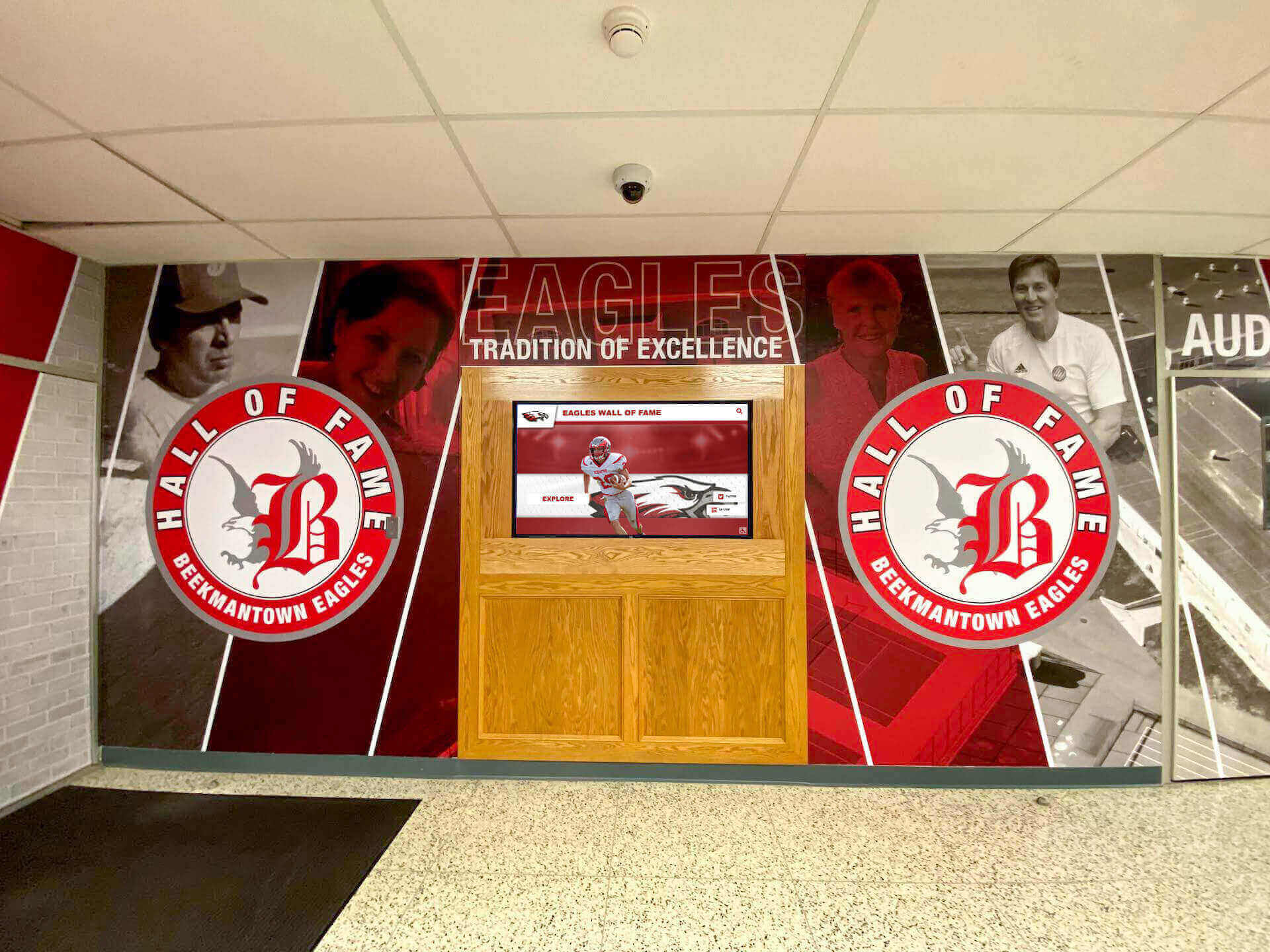
Digital Archives for Schools, Colleges & Universities: Complete 2025 Implementation Guide
Every educational institution accumulates invaluable history—yearbooks documenting decades of graduating classes, photographs capturing defining moments and daily life, athletic records celebrating championships and individual excellence, documents recording institutional evolution, newspapers preserving student voices, and countless artifacts that collectively tell the story of communities shaped by education. Yet these irreplaceable materials typically languish in deteriorating storage boxes, overcrowded filing cabinets, or limited-access archives where few can discover them and preservation remains uncertain. Digital archives transform these vulnerable physical collections into organized, searchable, permanently accessible repositories that preserve institutional memory, engage alumni, support research, and ensure future generations can explore their educational heritage. This comprehensive guide examines how schools, colleges, and universities can implement effective digital archives that honor the past while creating dynamic engagement with history. Understanding Digital Archives in Educational Settings Digital archives serve purposes far beyond simple storage, creating comprehensive systems that preserve institutional memory while making history accessible and engaging for diverse stakeholders.
Read More
Best School History Software: Complete Guide to Digital Heritage Management in 2025
Every educational institution accumulates history—yearbooks documenting each graduating class, photographs capturing defining moments, newspaper clippings celebrating championships, documents recording institutional evolution, and countless artifacts reflecting decades or even centuries of tradition. Yet this invaluable heritage typically languishes in storage rooms, deteriorating filing cabinets, and outdated display cases where few can access it and preservation remains uncertain. School history software transforms scattered physical archives into organized digital collections that preserve institutional memory, engage current students and alumni, celebrate achievements, and ensure future generations can explore and learn from the past. This comprehensive guide examines the best school history software options available in 2025, helping educational institutions select platforms that honor their unique heritage while creating accessible, engaging presentations of institutional identity. Understanding School History Software School history software encompasses specialized digital platforms designed to address the unique challenges educational institutions face in preserving and presenting their heritage. These systems serve purposes far beyond simple storage, creating interactive experiences that connect communities with institutional identity.
Read More
School Historical Timeline: Complete Guide to Documenting and Displaying Your Institution's Legacy 2025
Every school carries a unique story woven through decades or even centuries of students, educators, achievements, challenges, and community connections. These institutional narratives shape school culture, inspire current students, engage alumni, and demonstrate continuity connecting past traditions to present realities and future possibilities. Yet many schools struggle to effectively document, preserve, and share their rich histories in ways that resonate with contemporary audiences accustomed to interactive digital experiences. Historical timelines offer powerful frameworks for organizing and presenting institutional heritage, transforming scattered memories and archived materials into coherent narratives that celebrate legacy while building school pride across generations. This comprehensive guide explores how schools can create compelling historical timelines that honor their past, strengthen community connections, and leverage modern digital display technology to make institutional history accessible, engaging, and relevant to 21st-century students and stakeholders. Understanding the Value of School Historical Timelines Before investing time and resources into timeline development, schools should understand the multifaceted benefits these tools provide for institutional culture, community engagement, and educational enrichment.
Read More
School History Software: Complete Guide to Preserving & Showcasing Your Institution's Legacy
Every educational institution possesses a unique story spanning decades of achievement, tradition, and community impact—distinguished alumni who shaped their fields, championship teams that brought pride to entire communities, innovative educators who influenced generations, milestone anniversaries marking institutional evolution, and countless moments defining institutional character. Yet without proper systems for preserving and showcasing this heritage, invaluable history remains trapped in deteriorating yearbooks, scattered photograph collections, disconnected databases, and fading memories. School history software transforms how institutions capture, preserve, organize, and present their legacy, creating accessible digital archives that inspire current students, engage alumni, honor achievements, and ensure future generations can explore and learn from the past. This comprehensive guide examines the landscape of school history software in 2025, exploring available solutions, essential features, implementation strategies, and how the right platform can transform institutional heritage from forgotten storage boxes into dynamic recognition that strengthens community connections. Schools implementing comprehensive history software discover profound benefits extending far beyond nostalgic reminiscence. Students develop stronger connections to institutional identity when they can explore the achievements of those who came before them. Alumni maintain emotional bonds supporting lifelong engagement when they can access memories from their own school years. Prospective families gain confidence in educational stability when they observe institutions that value and preserve their heritage. Development offices leverage historical connections to strengthen fundraising appeals. Athletic departments showcase championship traditions inspiring current teams while honoring past excellence.
Read More
Best Way to Capture the History of a School: Complete Guide to Preserving Educational Legacy
Every school has a story worth telling—decades of educational excellence, memorable traditions, inspiring educators, accomplished alumni, championship teams, and defining moments that shape institutional character. Yet without intentional preservation efforts, these irreplaceable stories fade as memories dim, photographs deteriorate, documents scatter, and those who experienced pivotal moments are no longer available to share their perspectives. Capturing school history effectively requires systematic approaches combining modern digital technology with traditional archival methods, transforming fragmented memories and scattered materials into comprehensive, accessible heritage collections that inspire current students, engage alumni, and preserve institutional legacy for future generations. Schools that successfully capture and preserve their history discover profound benefits extending far beyond nostalgic reminiscence. Current students develop stronger connections to institutional identity when they understand the traditions they’re continuing. Alumni maintain emotional bonds supporting engagement and philanthropy when they can access memories and achievements from their own school years. Prospective families gain confidence in educational stability when they observe institutions that value and preserve their heritage. Most fundamentally, comprehensive historical preservation ensures that future generations can learn from the past, understand institutional evolution, and appreciate the foundations on which their present opportunities were built.
Read More
School History Preservation: Complete Guide to Protecting Institutional Legacy for Future Generations
Every school holds countless stories worth preserving—founding struggles, championship victories, distinguished alumni, innovative educators, transformative moments, and daily experiences that collectively define institutional identity. Yet without intentional preservation efforts, this rich history gradually disappears as memories fade, documents scatter, photographs deteriorate, and those who experienced defining moments pass away. School history preservation represents both responsibility and opportunity: the obligation to safeguard institutional legacy for future generations and the chance to create engaging resources that strengthen community bonds, inspire current students, and honor those who built educational excellence. This comprehensive guide explores proven strategies for preserving school history effectively, from traditional archiving methods to innovative digital solutions that make heritage accessible, searchable, and meaningful for contemporary audiences while ensuring permanent protection of irreplaceable materials. Schools successfully preserving institutional history share common approaches: systematic collection processes capturing materials before they disappear, organized storage protecting physical items from deterioration, digital solutions expanding accessibility while providing backup protection, community engagement enlisting broader participation in preservation efforts, and ongoing programs ensuring sustainability beyond individual champions. Whether your institution operates a century-old program requiring comprehensive historical documentation or a newer school establishing preservation foundations, the strategies outlined in this guide provide actionable frameworks for protecting stories, achievements, and memories that define your unique educational community.
Read MoreDigital School History Timeline: Complete Guide to Preserving and Displaying Your Institution's Legacy
Every educational institution has a unique story—decades or even centuries of academic evolution, athletic excellence, distinguished alumni, dedicated educators, and transformative moments that shape institutional identity. Digital school history timelines transform how institutions preserve, present, and engage communities with this rich heritage. Rather than dusty archives accessible only to researchers or static plaques offering minimal context, interactive digital timelines create engaging chronological journeys through institutional history that connect past achievements with present community and future aspiration. Schools implementing comprehensive digital history timelines report dramatic improvements in student connection to institutional identity, alumni engagement with heritage content, prospective family impressions during campus visits, and institutional memory preservation for future generations. Whether displayed through interactive touchscreens in high-traffic campus locations or accessible via web platforms enabling worldwide exploration, digital timelines make history tangible, searchable, and relevant for contemporary audiences while honoring the traditions and achievements that define each unique educational community.
Read More






























